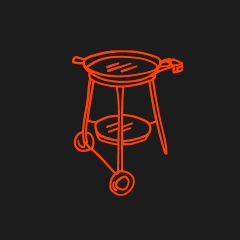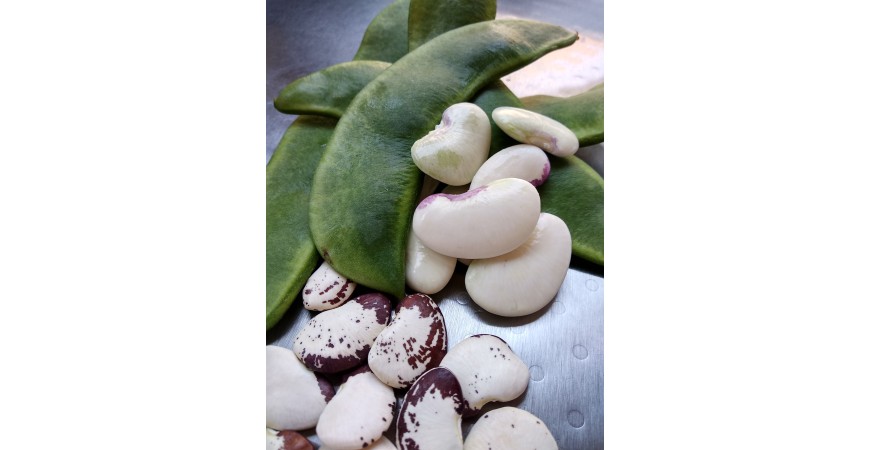How to prepare valencian butter beans for paella
Butters beans, also popularly referred to as garrofó, is an essential ingredient in many paella recipes. This small but indispensable legume absorbs the flavors of our broth, providing us with each bite with all the flavor of our paella with a soft and creamy texture.
Valencian butter beans are sold in three forms: fresh, dried or frozen. We recommend getting it fresh, but because it is an annual legume and is not available all year round, you can also buy it dried, since this way it can be found almost all year round and is easier to preserve.
In this blog post we are going to see how to prepare butter beans for paella, whether fresh, from its hydration to its use in the paella itself if we use dry or frozen.
How to prepare fresh valencian butter beans for paella

The usual way to prepare fresh butter beans is to remove it from its pod and fry it directly with the rest of the vegetables in our paella. When the sauce is ready, we add the water to the sauce to make the broth for our paella. It should cook between 15 and 30 minutes, depending on the variety and size.
For its conservation, if we have peeled it, it can be kept in our refrigerator for a few days. If it is still in its pod, it can be stored in the same way for approximately 3 weeks.
If we want to freeze it, whether in its pod or peeled, we will have to vacuum pack it and freeze it, in this way, it will last for several months.
How to prepare dry butter beans for paella
.jpg)
To prepare dry butter beans, we must first hydrate it and then boil it before adding it to our paella.
First, fill a container with water and introduce the butter beans to hydrate it for approximately 8 hours with baking soda, the use of baking soda is because it improves the texture of the legumes. The water should be at cold temperature, using 1 liter of water for every 200 grams of dry butter beans, because it will double its size and weight after hydration. If you decide to use baking soda, you should add 1 gram of baking soda for every liter of water.
.jpg)
In this image you can see after hydrating and cooking the dry butter beans.
Once you finish hydrating, discard the soaking water and wash the butter beans before boiling it.
Boiling of soaking butter beans
With our dry butter beans now hydrated, it's time to boil it to prepare it for our paella. Boiling the butter beans should take about 15 minutes.
First, fill the pot with a little cold water and make sure there is just enough space so they don't fight. Do not use salt, since salt clogs the pores of the seeds and will make them harder.
While boiling, make sure the boiling bubbles are small to prevent them from breaking and damaging the butter beans. Remember to defoam during cooking, this way you can eliminate most of the saponins, an indigestible component for the human body, in addition to helping to improve the texture.
Once cooked, you can use it directly in your paella, incorporating it before the rice.
Conservation of dry hydrated butter beans

If you have hydrated the dried butter beans, but perhaps have leftovers, you can still save it for later. Cover it tightly with slightly damp kitchen paper, this way it will last in the refrigerator for around 3 days.
You can also vacuum pack it, if you use this method and store it in the refrigerator it will last approximately up to 20 days if you use the correct temperature. If frozen and vacuum packed, under optimal conditions, it can last for many months.
Using the butter beans after defrosting

Although we can use the garrofon just taken out of the freezer, the best way to use our frozen garrofon is to take it out of the freezer and let it defrost gradually, that is, little by little and not suddenly.
The easiest way to do this is to leave it in the refrigerator the day before using it. Later we can add it to our paella directly before introducing the rice.
Frequent questions
Properties of the butter beans

The butter beans is a genuine Valencian ingredient that should not be missing in our paellas, coming from an annual climbing plant of the legume family, its seeds, which is the part we enjoy with the paella, are white and large like broad beans, covered by a wide green pod.
It is a nutritious ingredient with a buttery texture, rich in fiber and folic acid, along with other vitamins such as magnesium, phosphorus and zinc, as well as minerals such as potassium and iron. Thanks to its nutrients, vitamins and minerals, it is considered an ingredient that has a large amount of important vegetable proteins.
Among other characteristics we can highlight that it helps lower blood cholesterol and improve intestinal transit.
If you have ever wondered, what is butter beans in paella? or "what is the difference between valencian butter beans and other varieties?", you can find more information in our blog post "Butter beans - the indispensable ingredient for valencian paella"
Valencian butter beans varieties
We recommend that you use Valencian butter beans, since it is obtained from local producers, which ensures greater flavor when used in our paellas. Also remember that valencian butter beans is as important as the rice you use in a paella, look for the best products.
As for the possible varieties of Valencian butter beans that we can find, we can highlight 3 varieties in particular:

Painted butter beans
Also referred to as spotted butter beans, it stands out for the brown spots that adorn the entire body of its seeds.

Butter beans the cella
The spots are located on the upper part of the seed, resembling a raised eyebrow.

Partridge's eye butter beans
It has a single brown spot in the center, making it look like the open eye of a partridge.
We hope that all this information allows the butter beans you use in your paellas to be of the highest quality and that it gives you the best flavor, ricer lovers!




